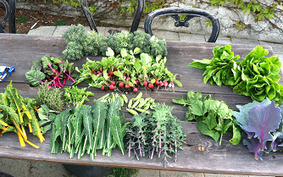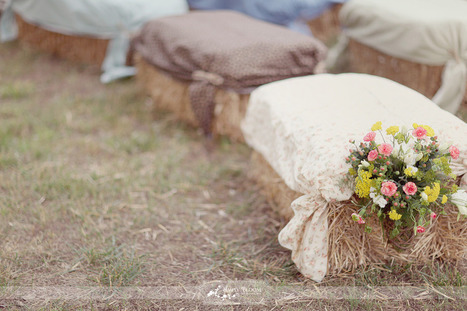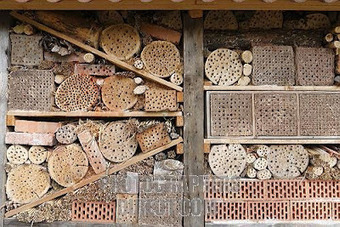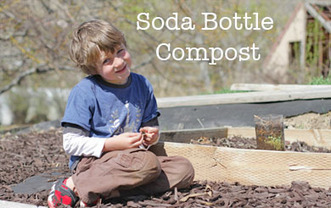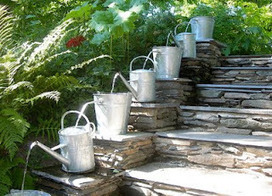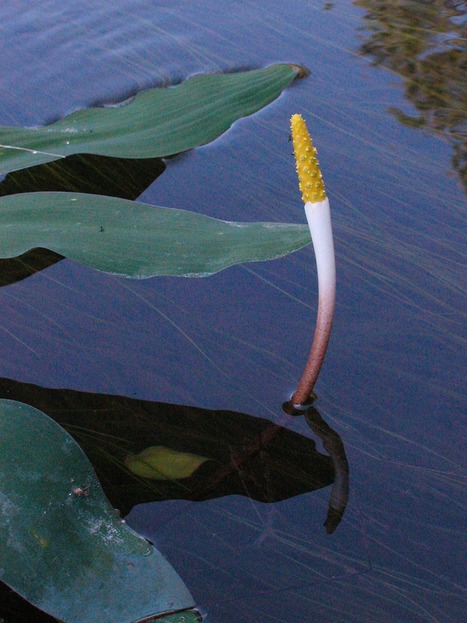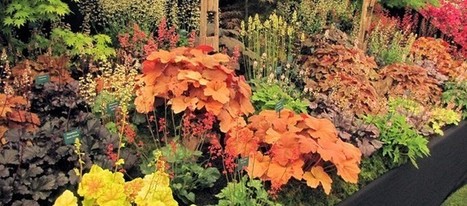 Your new post is loading...
 Your new post is loading...

|
Scooped by
Debra Anchors
May 9, 2012 8:40 PM
|
Planting herbs is only half the fun; the other half is in the kitchen. “I use a ton of them in my cooking because you get those aromatic notes from the warmer herbs, and the fresh cool base coming out of the really green ones,” says Jeffrey Fournier, the chef and owner at 51 Lincoln in Newton. Read Chef Fournier's suggested pairings, here: http://goo.gl/zgRUy

|
Scooped by
Debra Anchors
April 29, 2012 8:34 PM
|
The fame of hydroponics gardening has absolutely increased because a lot of people are patronizing them for their advantages and simplicity and easiness in handling. Whatever the purpose for growing the plants, this technique does not need soil and big spaces for growing the plants and also, the management needed for the growing of the plants is lessened. There are multiple techniques to do hydroponics gardening. With just the correct needed materials for growing plants, the plants are grown simply in containers by the small scale gardeners or the gardeners in ones home. Tents are made so that the plants grown hydroponically will grow well and they be protected from any damages. Read the entire article, here: http://goo.gl/cgFrj

|
Scooped by
Debra Anchors
April 29, 2012 8:20 PM
|
Since 2002, Golden Sands has sponsored a project that helps residents grow beetles, the natural predator of the loosestrife. Participants are given small plastic swimming pools with small stands of loosestrife covered in nets and several beetles to put in the pools. Later, when the beetles reproduce, they are put on strands of loosestrife growing in the wild. Stushek said the practice, which has been approved by the Wisconsin Department of Natural Resources after years of testing, works because the beetles only eat loosestrife. As the loosestrife starts to disappear, so will the beetles, she said. "The goal is to contain the loosestrife," Stushek said. Read more from the source: http://goo.gl/ei1Zu

|
Scooped by
Debra Anchors
April 29, 2012 8:43 PM
|
The palm-leaf mistflower is bringing in so many butterflies, it's hard to get the visitors inside at the National Butterfly Center in Mission, Texas. The visitors get out of the car and then have a speechless look as they sit and stare at hundreds of butterflies that seem perched or are swirling about every blooming flower stalk. Read the entire article, here: http://goo.gl/90FEC

|
Scooped by
Debra Anchors
April 29, 2012 8:05 PM
|
For even more impact, distribute your bulbs in layers, like lasagna. “Double-decker” planting is really quite simple. Find out how, here: http://goo.gl/y2gEk

|
Scooped by
Debra Anchors
April 30, 2012 9:21 AM
|
Know the environment where you are adventuring and the kinds of snakes and other natural hazards. Avoid dense brush, stacked firewood, rock piles, etc. – Think before you leap! Read the "what to do if" article, here:http://goo.gl/643NF

|
Scooped by
Debra Anchors
April 26, 2012 1:11 PM
|
Just one of the reasons given in this entertaining article, "You can rub your friends’ faces in it. You will be a superior human being. Your friends will coo with admiration and jealousy. You will know you are doing your part for mankind, heck…for Mother Earth herself! Make sure you post photos of your harvests on Facebook." Read the article here: http://goo.gl/yCviv

|
Scooped by
Debra Anchors
April 25, 2012 1:30 PM
|
According to Jessica, "Ceremonies don't last that long in the scheme of the whole wedding. But they are the important bit. And they often set the tone for the rest of the day/night. I think it's a part that often gets neglected in the styling sense, but has lots of potential to be fun, different and special." Wouldn't it be a nice idea to add a few straw or hay bales like these? They can be dressed up to look cozy and comfy and will add an imaginative touch to the big event. Read more here: http://goo.gl/jSrpE

|
Scooped by
Debra Anchors
April 22, 2012 9:57 AM
|
Native bees are important pollinators in our gardens. The more pollinators we can attract to our flower, fruit, and vegetable plants, the higher the quality and quantity of produce and flowers. We instinctively know to add nectar-filled flowers to our garden but we also should provide a place for our native bees to live. Here are some easy native bee nests you can add to your landscape. Read more: http://goo.gl/mTyJO

|
Scooped by
Debra Anchors
April 21, 2012 10:14 PM
|
As the Arctic ice opens up, the world turns its attention to the resources below. According to the U.S. Geological Survey, 30 percent of the world's undiscovered natural gas and 13 percent of its undiscovered oil are under this region. As a result, military action in the Arctic is heating up, with the United States, Russia, Denmark, Finland, Norway, Iceland, Sweden and Canada holding talks about regional security and border issues. Read more: http://goo.gl/Yrr34

|
Scooped by
Debra Anchors
April 21, 2012 9:59 PM
|
This simple kids science activity uses an empty 2 liter soda bottle and some things you have around your house and yard to teach kids about how compost is made. Read more: http://goo.gl/rZTBp

|
Scooped by
Debra Anchors
April 20, 2012 11:00 PM
|
Don't toss that celery base! Did you know you can use it to re-grow a new bunch of celery? Read more here: http://goo.gl/Zu2vr

|
Scooped by
Debra Anchors
April 19, 2012 5:19 PM
|
Water from the river below the stairs is pumped up to the top watering can and then, because the buckets are set at a slight angle, the water overflows into the watering can below. Read the article from the original source, here: http://goo.gl/snyUy
|

|
Scooped by
Debra Anchors
April 29, 2012 8:30 PM
|
It belongs to a genus containing only a single species, distributed in most of the eastern U.S. from New England through Kentucky and Tennessee, south to Texas.
It is a showy aquatic species, often spotted in big patches in blackwater streams or swamps or at the edges of old rice fields near the coast.
Read more about this mystery plant: http://goo.gl/51Rf8

|
Scooped by
Debra Anchors
April 29, 2012 8:13 PM
|
Much of eastern North America is experiencing a sudden abundance of a particular butterfly - the Red Admiral (Vanessa atalanta). Population "explosions" have been reported in the past, but the current one is awesome in its size. Here's a report by a knowledgeable observer in southeastern Wisconsin: http://goo.gl/4vt3b

|
Scooped by
Debra Anchors
April 29, 2012 8:24 PM
|
The nasturtium is one of those flowers that anyone can grow with even little experience as a gardener. As spring unfolds, nasturtium seeds are available in packets everywhere. Read more from the source: http://goo.gl/Oi4tB

|
Scooped by
Debra Anchors
April 29, 2012 8:10 PM
|
In a nutshell, DiMaggio’s invention is an upright cart that holds three or four rows of gardening pans. It has nearly 12 square feet of growing capacity with a footprint of just 32 by 34 inches. The ultra-compact design allows apartment dwellers and others with limited space to enjoy growing flowers, vegetables and herbs. The patented system (a photo and description of which appeared in the April issue of Phoenix Home & Garden) is available online. But DiMaggio expects gardening and home-improvement outlets to carry the product soon. Read more here: http://goo.gl/lfTXc

|
Scooped by
Debra Anchors
April 26, 2012 1:52 PM
|
As I go through my photographs, I thought I would share a few things which inspire my gardens. How do you get your inspiration? See more inspiration here: http://bit.ly/A6ErEG

|
Scooped by
Debra Anchors
April 26, 2012 5:23 PM
|
The instructions to make stepping stones will be found by following ther link below - "The stepping stones come out in a nice big size and just the right thickness! Set them down in a square pattern or diagonally like diamonds." Read more here: http://goo.gl/ICTau

|
Scooped by
Debra Anchors
April 25, 2012 11:57 PM
|
There are nearly 50 species of heuchera inhabiting woodlands, prairies, and mountainous regions. Before the new wave of hybrid heuchera, many coral bells claimed a heritage that included only one species, H. sanguinea; the coral bells of your grandmother. Today, however, in order to give gardeners stronger, prettier plants, breeders are combining species so the newest coral bells provide a mix of outstanding characteristics. Read more from the souce: http://goo.gl/3dRrL

|
Scooped by
Debra Anchors
April 24, 2012 5:53 PM
|
Here’s simple birdhouse you can build that is perfect for a parent – child project using simple tools. This kind of birdhouse is used for ledge nesters, these birds are looking for a protected flat surface where they can build nest. See more here: http://goo.gl/bUizr

|
Scooped by
Debra Anchors
April 21, 2012 11:28 PM
|
What you plant in your garden is totally up to you. If, however, you let your children choose the plants for the garden, they may be more inclined to eat the crops they/you harvest. One of the steps that Ennes’ grandchildren like to do is start their seedlings indoors. If you plant the seeds in egg cartons filled with topsoil, when the seedlings are ready for transplanting the carton can go directly into the ground. Ennes has used egg shells as mini planters. “Just break off the end. Remove the egg and fill the shell with soil,” Ennes said. “Then gently poke a hole in the soil and add a seed.” Read more: http://goo.gl/4DfpS

|
Scooped by
Debra Anchors
April 24, 2012 8:14 PM
|
Gardening helps families spend time together outdoors, take pride in growing our own food, and connect to others who have lived on the land before us. Even though gardening offers a bounty of simple wonder, beauty and fun for even the smallest children, it doesn’t hurt to employ a few methods for getting and keeping them especially engaged. Here are some simple ways to maximize your child’s interest in the garden: http://goo.gl/zA7Rp

|
Scooped by
Debra Anchors
April 20, 2012 11:16 PM
|
Train the vine onto a trellis or fence to save space and to produce more rounded fruit. These gourds can reach anywhere from 6 inches to 2 1/2 feet long, and about 4 to 7 inches in diameter. They ripen to dark green in late summer, and for sponge harvest should be left on the vine until the skin begins to shrivel. When this occurs, harvest them and scrub the skin away, revealing the porous, dense network of tan-colored matter within. They will be full of seeds; just cut the gourd to desired size and shake out the seeds. They're ready to use! Read more about growning your own luffa sponge by following the photo-link.

|
Scooped by
Debra Anchors
April 20, 2012 6:00 PM
|
Even if you can decorate a living area or bedeck a bedroom with the best of them, landscape design has a unique set of challenges that may leave you stumped. Not only does it require a totally different skill set from interior design, but it also changes and evolves over time — flowers wither, trees mature, shrubs grow and spread. And that's where a landscape pro can prove to be invaluable. Follow our tips for finding, hiring and working with landscapers to make your yard the envy of the neighborhood. Read more: http://goo.gl/JQGcq
|



 Your new post is loading...
Your new post is loading...








